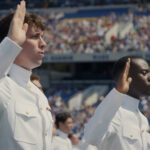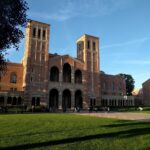Where’s the Real Diversity?
The latest issue of The Chronicle of Higher Education includes a special supplement on “Diversity in Academe” that is only missing one thing.
Diversity in Academe features articles on:
- “A special orientation for White Students;”
- “Welcoming Gay Students to HBCUs [historically black colleges and universities, an official designation];”
- “‘I wish I were black’ and Other Tales of Privilege;”
- “What My Students Have Taught Me About Race;”
- “Why So Few Asians Are College Presidents;”
- “Sharing Math’s Appeal With First-Generation Students;”
- “For Remedial Students, Where the Hallway Leads;”
- “First-Generation Students” who “Find Crucial Support;” and
- “Adding Diversity to Curricula, Starting in the Classrooms.”
The last piece focuses on a “social movement” of “change agents” at Lafayette College. “Brett Hendrickson, an assistant professor of religious studies, joined the faculty group in 2011 to learn how to add more diversity to his courses,” Ben Gose reports. “Until then, he says, he had moved quickly from one topic to the next in his ‘Contemporary Religious Issues’ course, devoting equal time to subjects like stem-cell research and abortion.”
“But his meetings with other professors in the group convinced him that this course needed to go beyond imparting content and teaching critical thinking skills. So he cut some topics and devoted more time to others. Students now spend three weeks on homosexuality and religion, and read John Corvino’s What’s Wrong With Homosexuality? (A gay professor of philosophy at Wayne State University, Mr. Corvino has a witty touch in arguing the case for same-sex marriage.) Mr. Hendrickson has also expanded a section about the authority of scripture in some religions, to give students a greater understanding of why religious conservatives oppose same-sex marriage.”
“I’m amused whenever I hear someone say “as an L.G.B.T. person.…” Nobody is an L.G.B.T. person,” the Wayne State wit wrote recently in The New York Times. “You can have two, maybe three letters maximum at any moment (three could be a bisexual trans man in a gay relationship).”
My predecessor at Accuracy in Academia, author Dan Flynn, has pointed out that to academics, diversity is a campus that looks like the United Nations and thinks like a San Francisco coffee house. As it happens, Diversity in Academe offers a “diversity index” drawn from a Chronicle of Higher Education analysis of U. S. Department of Education data: “the diversity index is the probability, on a scale of 0-100, that two students at an institution will be from different racial or ethnic groups.”
Malcolm A. Kline is the Executive Director of Accuracy in Academia.
If you would like to comment on this article, e-mail contact@academia.org.




